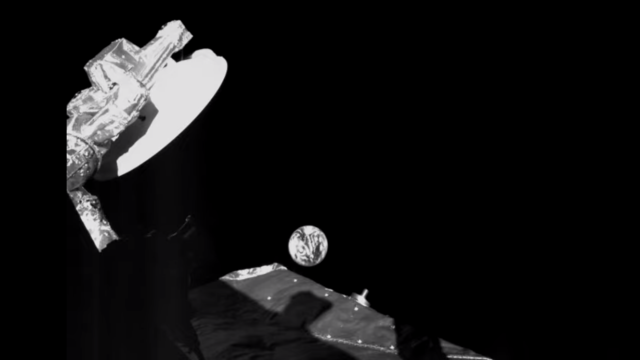Some of you probably wish you could be onboard BepiColombo right now, as the space probe whizzes far away from planet Earth.
The spacecraft flew by the Earth last Friday as part of a manoeuvre to put it on course toward planet Mercury. Obviously, BepiColombo’s scientists used the flyby as an opportunity to snap lots of images of Earth, because many people love Earth even more than they love Mercury—surprising, I know. Here’s a video the European Space Agency made showing all 200 of those images.
As part of BepiColombo’s journey, the probe flew by the Earth, then will fly by Venus twice and Mercury six times before settling into its final orbit. These flybys are also called gravity assist manoeuvres and are used to alter a spacecraft’s trajectory to allow it to more easily insert itself into a specific orbit.
Though these flybys are scheduled parts of the mission, not everyone is always aware of them. In fact, this past Monday, the Minor Planet Centre reported a new Near-Earth Object that they named 2020 GL2. They deleted the object when they realised that it was just the spacecraft.
BepiColombo launched on October 20, 2018 and is scheduled to arrive at Mercury in December 2025. Scientists hope to learn more about Mercury’s composition, how it’s evolved over time, and its magnetic field and atmosphere.
What’s so great about Mercury, you might ask? How dare you. Mercury is a mystery wrapped inside of an enigma. The planet generates its own internal magnetic field, like Earth does and unlike Venus and Mars. Its interior consists mostly of a core, but scientists aren’t sure why—it’s possible that it was once a much larger planet that lost its outer surface to a collision with another planet, though evidence doesn’t completely support this theory. It has ice, carbon, and maybe once had the ingredients for life, hidden in its cracks and craters. These are the mysteries BepiColombo’s scientists seek to unravel.
But perhaps most surprisingly, BepiColombo will add to a long legacy of using Mercury as a test for Einstein’s incredibly successful theory of gravity, called general relativity. Mercury’s orbit precesses, meaning the planet traces a sort of spirograph rather than an ellipse in its orbit. The amount of precession is more than predicted by Isaac Newton but is explained by relativity perfectly. It was an early successful test for Einstein’s theory. BepiColombo will be able to further measure the planet’s orbit in order to offer an even higher-precision test.
So, goodbye BepiColombo, from all of us stuck here on Earth. Good luck on your journey.
